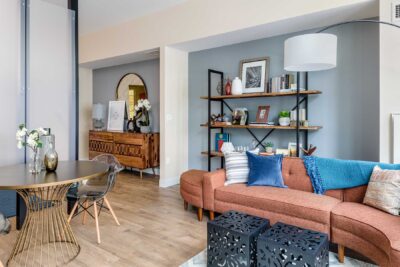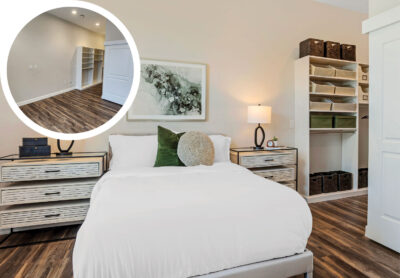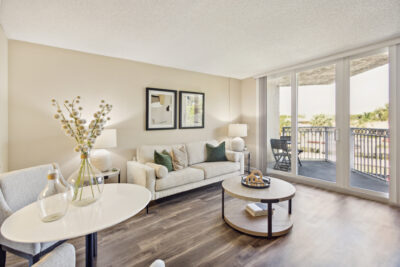3 Tips for Thoughtful Furniture Placement
An empty room is a blank canvas for interior designers. Their artful eyes see potential where others see barren, hollowed-out space. They use furniture the same way sculptors use clay, crafting beauty through design. Placing furniture is like sketching a scene. Mood and tone must complement expectation. Model apartments should reflect the lifestyles of their prospective residents. A young family in a quiet neighborhood would want to see different furniture than a retired senior. Even so, there are many design tricks and placement ideas that enhance rooms no matter the style or size.
Harmonize
The ancient Chinese called the harmony between a room, furniture, and the people inside Feng Shui—its tenants primarily revolve around the “art of placement,” something wholly familiar to interior designers. Model apartment staging utilizes the universals of shape and lighting to attract people. Staging is also mathematical—measurements rule coequally with artistic potential. The interior designer must input practicality into ambition. Feng Shui is an extension of the philosophical idea of yin and yang; well-arranged rooms should have a balance between large and small piece. Many interior designers subscribe to the foundations of Feng Shui without even realizing it.
Focus on Function
Think—who uses the room and for what purpose? Different spaces require different furniture. Imagine waking up in the morning with a cup a coffee, sitting on a couch, and reading the news. The mug gets warm in your hand, and you want to put it down, so you reach to the end table next beside the couch and set it down. This paring of two furniture pieces seems intuitive, but it requires a deep understanding of form and function on the part of the designer. Height, width, and shape all factor into functionality. Furniture placement allows models to expand beyond the scope of their measurements.
Feel the Flow
Rooms should connect and release at certain points without interrupting mood. Using an area rug is a great way to seamlessly join a space together, with all of the furniture pieces in a room connecting to it. Properly sizing the room and its contents is one of the best ways to make smooth transitions—one room with gigantic furniture pieces and another with small pieces is something reserved for wonderland, not model apartment staging. Lighting is also a factor in the way one room melds into the next. Natural light basks models in an earthen glow that can’t be mimicked by artificial light; at the same time, lamps and overhead fixtures cast rooms in unique light some occupants might be looking for. Walking through a model should be a smooth experience, and the placement of the furniture and the feel of the room are vital components to creating a positive memory.
Bringing it all Together
Furniture placement offers an important opportunity for designers to work with the skeletal foundation of a room. Without furniture, a room is simply four walls. The goal of a well-designed room is to function in tandem with activity—family rooms, offices, and leisure space all serve a purpose. A room is meaningful not because of the space itself, but because of the way it is outfitted to become what its residents dream it to be. Thoughtful furniture placement is essential to convincing a prospective resident that this space could be their space—a place where their life will happen.





